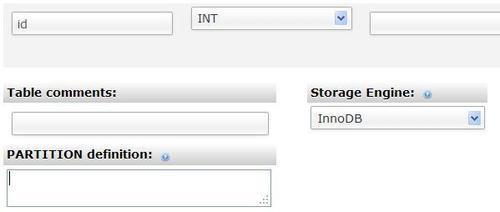- Mastering phpMyAdmin 3.4 for Effective MySQL Management
- Mastering phpMyAdmin 3.4 for Effective MySQL Management
- Credits
- About the Author
- About the Reviewers
- www.PacktPub.com
- Preface
- 1. Getting Started with phpMyAdmin
- PHP and MySQL: The leading open source duo
- What is phpMyAdmin?
- Installing phpMyAdmin
- Configuring phpMyAdmin
- Installing phpMyAdmin configuration storage
- Upgrading phpMyAdmin
- Summary
- 2. Configuring Authentication and Security
- 3. Over Viewing the Interface
- 4. Creating and Browsing Tables
- 5. Changing Data and Structure
- Changing data
- Changing table structure
- Summary
- 6. Exporting Structure and Data (Backup)
- 7. Importing Structure and Data
- 8. Searching Data
- 9. Performing Table and Database Operations
- 10. Benefiting from the Relational System
- 11. Entering SQL Statements
- 12. Generating Multi-table Queries
- 13. Synchronizing Data and Supporting Replication
- Synchronizing data and structure
- Supporting MySQL replication
- Summary
- 14. Using Query Bookmarks
- 15. Documenting the System
- 16. Transforming Data using MIME
- Browsing data without transformations
- Enabling transformations
- Examples of transformations
- Summary
- 17. Supporting Features Added in MySQL 5
- 18. Tracking Changes
- 19. Administrating the MySQL Server
- A. Troubleshooting and Support
User-defined partitioning (refer to http://dev.mysql.com/doc/refman/5.1/en/partitioning.html) is offered in MySQL 5.1. It allows us to "distribute portions of individual tables across a file system according to rules which you can set largely as needed". Using this feature in phpMyAdmin requires knowledge of its syntax as there are many partition types. Also, for each partition type, the number of partitions and the values associated with each partition are too random to be easily represented on a web interface.
Let us try it by creating a table named test with one column id. On the table creation panel, if connected to a MySQL 5.1 server, phpMyAdmin shows a PARTITION definition dialog, as shown in the following screenshot:

Here, we enter a PARTITION BY RANGE clause, which will create partitions on the id column:
PARTITION BY RANGE (id) ( PARTITION p0 VALUES LESS THAN (1000), PARTITION p1 VALUES LESS THAN (2000), PARTITION p2 VALUES LESS THAN (30000) );
For a table on which a partition has been defined, the Operations page displays a Partition maintenance dialog where we can:
- Choose a partition and then request an action, such as Rebuild
- Remove the partitioning

Finally, exporting this test table in SQL mode produces statements with embedded comments that a MySQL 5.1 server would recognize and interpret in order to recreate the same partitions:
CREATE TABLE `test` ( `id` int(11) NOT NULL ) ENGINE=MyISAM DEFAULT CHARSET=latin1 /*!50100 PARTITION BY RANGE (id) (PARTITION p0 VALUES LESS THAN (1000) ENGINE = MyISAM, PARTITION p1 VALUES LESS THAN (2000) ENGINE = MyISAM, PARTITION p2 VALUES LESS THAN (3000) ENGINE = MyISAM) */;
-
No Comment
